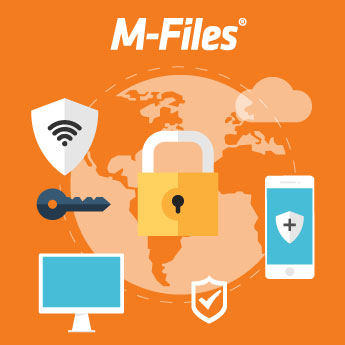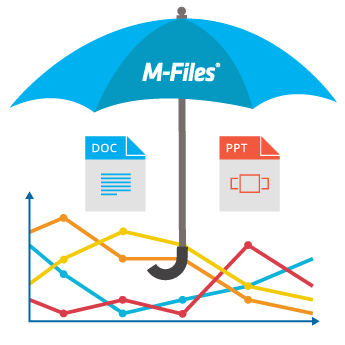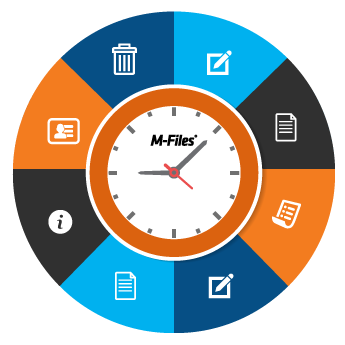Encryption, Data Loss Prevention and Audit Trail in M-Files EDMS

Encryption

It is imperative that your data is fully protected whether it’s being transmitted over a network or at rest so that no one gains unauthorized access to your information.
- M-Files encrypts network communication between M-Files clients (M-Files Desktop, M-Files Web and M-Files Mobile) and M-Files Server via HTTPS, RPC, VPN or IPSec
- M-Files encrypts data at rest with the AES-256 algorithm (compliant with the FIPS 140-2 standard)
- M-Files supports database encryption via Microsoft SQL Server Transparent Data Encryption (TDE)
Data Loss Prevention

M-Files provides comprehensive data loss prevention mechanisms out-of-the-box:
- Lost devices ≠ lost data: We provide guidance to help you safeguard data on individual client devices. Since all data in M-Files is stored securely on the server or in the cloud, no data is lost if an employee loses a laptop or fails to return a device upon leaving the company.
- Preserve old versions: Preservation of old versions and the ability to revert back to previous versions is built into M-Files.
- Check it out: Check-in and check-out functions, so you can keep track when a file is being edited and who is making changes.
- No file backup? No problem: Easily control which users can delete documents and data. Deleted files and data can be quickly undeleted by administrators without having to restore backup files.
- Backup: M-Files Cloud Vault users don’t have to worry about backing up their data – we take care of it and can even provide regular offsite copies for independent storage. For on-premises deployments, we provide best practices to maintain backups of your data.
- Track everything: View a change log of every version of a file that shows which user made edits, when they were made as well as other information about the lifecycle of the document.
Audit Trail

M-Files provides built in audit trail functionality to record key events like:
- Automatic record of object events, such as object creation, modification and deletion
- Information about who performed any operations and when they did it
- Tracking of logins, logouts, password changes and user group changes
